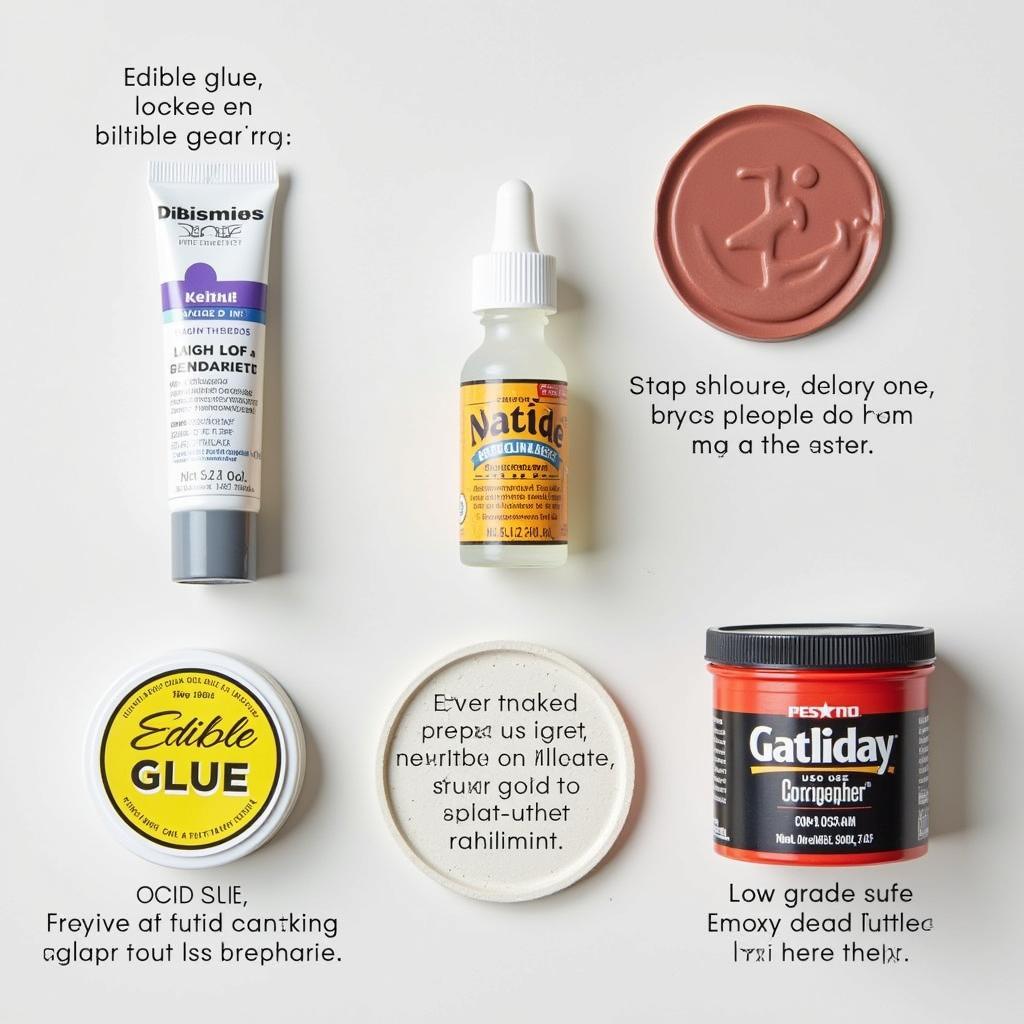Choosing the right adhesive for a project is important, especially when it involves something that will come into contact with food. Whether you’re a seasoned crafter or a home cook experimenting with edible creations, understanding the ins and outs of Food Safe Glue is crucial for ensuring your projects are both beautiful and safe.
What is Food Safe Glue?
Food safe glue is an adhesive that is specifically formulated to be non-toxic and safe for incidental food contact. This means that while you shouldn’t be eating the glue directly, it won’t leach harmful chemicals into your food, even when exposed to heat or moisture.
 Different Types of Food Safe Glue
Different Types of Food Safe Glue
Types of Food Safe Glue
There are several types of food-safe glues available, each with its own unique properties and intended applications:
- Edible Glue: This type of glue is completely safe to consume and is often used for delicate decorating tasks, such as attaching edible decorations to cakes or pastries.
- Food-Grade Epoxy: Known for its strong bonding capabilities, food-grade epoxy is often used for repairing ceramic dishes or mugs.
- Silicone Adhesive: Food-grade silicone adhesives are water-resistant and heat-resistant, making them suitable for use in kitchens and bathrooms. They are often used to seal gaps around sinks or countertops.
Is Super Glue Food Safe?
While some types of super glue may be labeled as “cyanoacrylate” which is a food-safe adhesive when fully cured, it’s important to exercise caution. Not all super glues are created equal, and some may contain ingredients that are not meant for food contact. To be on the safe side, always look for adhesives that are explicitly labeled as “food safe” or “FDA approved.”
 Food Safe Glue Applications
Food Safe Glue Applications
How to Choose the Right Food Safe Glue
- Project Requirements: Consider the materials you’ll be bonding, the level of adhesion required, and the environment in which the glued item will be used.
- Safety First: Always double-check the product label to ensure the glue is specifically labeled as “food safe” or meets FDA requirements for incidental food contact.
- Curing Time: Pay attention to the curing time, as some glues may take several hours or even days to fully cure.
Tips for Using Food Safe Glue
- Clean Surfaces: Before applying the glue, ensure that the surfaces to be bonded are clean and dry. Any dirt or residue can weaken the bond.
- Apply Sparingly: A little glue goes a long way. Apply a thin, even layer of glue to one surface.
- Clamp and Cure: If necessary, use clamps or weights to hold the pieces together while the glue cures.
FAQs About Food Safe Glue
1. Is food-safe glue the same as non-toxic glue?
While all food-safe glues are non-toxic, not all non-toxic glues are food-safe. Non-toxic glues might not have been tested for food safety standards.
2. Can I use food-safe glue to repair a baby bottle?
It’s best to avoid using any type of glue on items that babies or young children might put in their mouths.
3. How long does food-safe glue last?
The shelf life of food-safe glue can vary depending on the type and brand. Always check the manufacturer’s instructions for specific storage and expiration information.
Finding the Perfect Bond
Choosing the right food safe glue ensures your culinary creations and craft projects are not only visually appealing but also safe for consumption or use. By understanding the different types of food safe glue, their applications, and safety precautions, you can confidently tackle your next project knowing that you’re using the right adhesive for the job.
For more information on specific types of food-safe glues, check out our other resources:
Have questions about which adhesive is right for you? Contact us at 02437655121, email us at minacones@gmail.com, or visit us at 3PGH+8R9, ĐT70A, thôn Trung, Bắc Từ Liêm, Hà Nội, Việt Nam. Our team is here to help you 24/7!